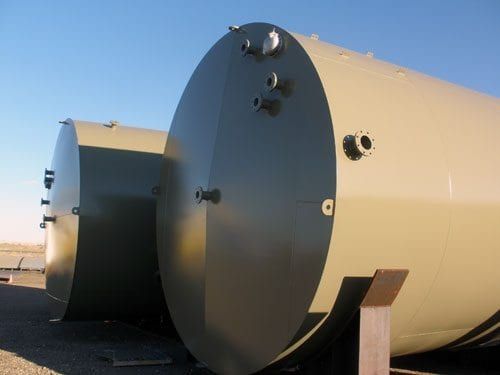If you find your facility in need of a Spill Prevention, Control, and Countermeasure (SPCC) plan, you may be in luck! A full-fledged SPCC plan can be a costly expense because of the need for a Professional Engineer to seal the plan, the need for site figures outlining the oil storage areas, piping, transfer areas, and a detailed description of the processes at the facility. Fortunately, there is an alternative for facilities that can reduce those costs by implementing a Tier I Qualified SPCC and self-certifying the plan if they meet some very specific criteria. “Self-certifying” means that someone within your company would need to be familiar enough with the rules of Title 40 of the Code of Federal Regulations, Chapter 112 (40 CFR §112) to certify that the information within the plan is accurate and meets the requirements. The Environmental Protection Agency (EPA) developed the Tier I Qualified SPCC Plan Template to fit the needs of these qualifying facilities that pose less of a liability to the environment and to bring some ease to the process of developing an SPCC Plan.
The Tier I Qualified SPCC Plan Template is a comprehensive document that lists every necessary SPCC rule requirement for Tier I qualified facilities. You can fill in and edit the document with facility-specific information from oil storage details to standard operating procedures and use the checklist portions of the template to ensure you have covered all associated requirements to create a valid and adequate SPCC Plan.
However, use of the template is not available to every facility with oil storage on site. Facilities with larger quantities or larger tanks of oil are regulated with a greater degree of caution because they come with greater potential risks of oil spills. To know if your facility qualifies for use of the Tier I template, it must meet a list of eligibility criteria:
- A total aboveground oil storage capacity of 10,000 U.S. gallons or less;
- No aboveground oil storage containers with a capacity greater than 5,000 U.S. gallons; and
- No single oil discharge greater than 1,000 gallons, or
- No two discharges greater than 42 gallons within any 12-month period to navigable waters or adjoining shorelines in the three years before the SPCC plan is certified.
Facilities with oil storage high enough to trigger the need for an SPCC Plan (1,320 total gallons of oil storage capacity on-site), but that still sit below 10,000 total gallons (and with no containers greater than 5,000 gallons) get to breathe a little easier because they present a lesser risk. They do not need an SPCC Plan sealed by a Professional Engineer, the template document speeds up the process of preparing a plan, and ultimately the costs of preparing an SPCC plan are greatly reduced.
The template is downloadable from the EPA website. It is a great resource to ensure you meet all the requirements for the SPCC plan; however, just checking the boxes and filling in the form is not all that is required. You must still provide the documentation behind the template. For instance, you still need to document that your secondary containments are of sufficient capacity, develop and document tank inspections, and develop checklists for inspections, oil transfer operations, spill response, and spill cleanup.
With this streamlined way of preparing an SPCC plan, there’s no reason to delay. Your facility can be compliant in short order, and at a lower cost than most have come to expect compared to full SPCC plans.
Contact Our Environmental Consultants
Braun Intertec can prepare a Tier I template, with the appropriate documentation, for self-certification, or a Tier I template SPCC plan option with a P.E. seal. For more information, please click the link below to fill out our Contact Us form.
